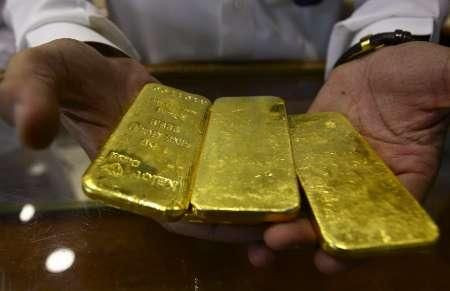Gold to Reach $1,940 by Yearend - Goldman Sachs

(REUTERS) -- Oil, gold and base metals are Goldman Sachs' top commodity picks this year, with big upside risk in oil due to tight fundamentals and a potential Iranian conflict, the investment bank said on Monday.
Price increases in Brent crude already in the first weeks of the year mean Goldman's end-year target is only 13 percent away, but it is the commodity with the greatest potential to break above its target, Head of Commodities Research Jeff Currie said.
Oil we like the most from a fundamental basis but at $113 a barrel in the current environment is pretty rich, he told a strategy conference in London.
Goldman expects Brent oil to end the year at $127.50 per barrel and trade at an average of $120 in 2012.
Gold and base metals have further to rise from current levels to Goldman's targets, but have scant potential above the targets.
Oil on the other hand, given the current environment, tight fundamentals, the current geo-political situation in Iran, creates massive upside price risk relative to our target, Currie said.
He did not say how high oil could spike if an Iranian conflict broke out. Brent crude rose 13 percent last year.
Short of a conflict, an EU embargo on Iranian oil would likely to be neutral for the market because Chinese government reserves would likely absorb excess oil, Currie added.
Excess demand in the market would lead to another drawdown in oil inventories this year, although a more modest one than in 2011.
The most recent weekly U.S. data suggests that a downward trend for global inventories was reestablished in December, he said.
Despite softer Chinese economic growth, demand for oil has continued to be resilient and China is due to overtake the United States as the world's biggest oil importer within 18 months, Currie added.
GOLD, BASE METALS TO REBOUND
Both gold and copper have been sold off to raise cash due to tight credit conditions in Europe, but this is likely to balance itself in coming months and lead to a rebound in both metals, he said.
The way we like to look at the commodities space is that gold and base metals reflect value plays, meaning they have had events that have created a significant disconnect between fundamentals and prices, Currie said.
In gold, a historic linkage between interest rates and gold prices broke down from October, but this should reestablish itself and lead to U.S. gold futures rising to $1,940 per ounce by the end of the year, he said.
U.S. gold futures were trading at $1,618 per ounce on Monday after rising about 10 percent last year, one of best performing assets after U.S. treasuries and Brent crude.
Gold fell by about a quarter after touching a record peak above $1,900 per ounce in September.
Base metals saw sharp falls in the fourth quarter, mainly due to destocking in Europe linked to reduced trade credit and the European debt crisis, Currie said.
We think this is mosly behind us, he said, adding that end use consumption was much stronger than appeared due to the destocking.
LME copper, which slid 21 percent last year, is expected to end the year at $9,500 per tonne, up 27 percent from current levels of $7,500 per tonne.
© Copyright Thomson Reuters {{Year}}. All rights reserved.






















